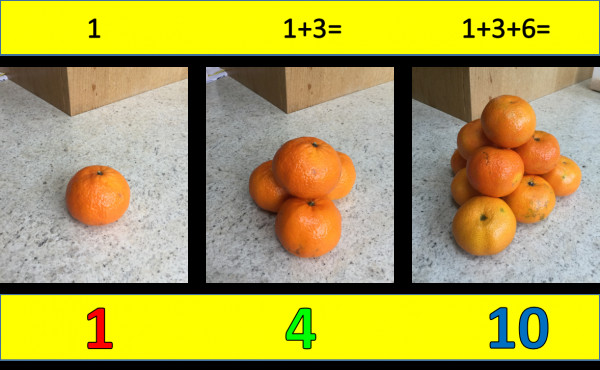The festive season is upon us, and with it comes the classic carol, “The Twelve Days of Christmas.” This catchy tune lists a series of increasingly extravagant gifts given by “my true love.” But have you ever stopped to wonder just exactly how many gifts are mentioned in total throughout this Christmas song? Let’s unwrap the numerical surprise hidden within this holiday favorite.
Decoding the 12 Days of Christmas Song
For those not completely familiar with the lyrics, each verse of “The Twelve Days of Christmas” builds upon the previous one. On the first day, a partridge in a pear tree is gifted. On the second day, it’s two turtle doves and a partridge in a pear tree, and so on. This means the gifts accumulate, creating a fun mathematical puzzle.
Let’s break down the gifts for the first few days to see the pattern:
- First day of Christmas: “a Partridge in a Pear Tree” – 1 gift.
- Second day of Christmas: “Two Turtle Doves and a Partridge in a Pear Tree” – 2 + 1 = 3 gifts.
- Third day of Christmas: “Three French Hens, Two Turtle Doves, and a Partridge in a Pear Tree” – 3 + 2 + 1 = 6 gifts.
As you can see, the number of gifts given each day is increasing, but how do we calculate the grand total after all twelve days? This is where some interesting math concepts come into play.
The Math Behind the Gifts: Triangular Numbers
The number of gifts given each day actually corresponds to what mathematicians call Triangular numbers. Imagine arranging objects in the shape of a triangle.
- The 1st triangular number is 1 (just one object).
- The 2nd triangular number is 3 (a triangle with 2 rows).
- The 3rd triangular number is 6 (a triangle with 3 rows).
- The 4th triangular number is 10 (a triangle with 4 rows), and so on.
Notice how these triangular numbers match the number of gifts given on each day of Christmas!
- Day 1: 1 gift (1st triangular number)
- Day 2: 3 gifts (2nd triangular number)
- Day 3: 6 gifts (3rd triangular number)
- Day 4: 10 gifts (4th triangular number)
- Day 5: 15 gifts (5th triangular number) – (5 gold rings + 4 calling birds + 3 French hens + 2 turtle doves + 1 partridge in a pear tree = 15)
From Triangles to Pyramids: Tetrahedral Numbers
To find the total number of gifts over all twelve days, we need to add up the first twelve triangular numbers. This sum leads us to another fascinating mathematical concept: Tetrahedral numbers.
Tetrahedral numbers are formed by adding up triangular numbers, just like triangular numbers are formed by adding up regular numbers. Imagine building pyramids with triangular bases.
- The 1st tetrahedral number is 1.
- The 2nd tetrahedral number is 4 (1 + 3).
- The 3rd tetrahedral number is 10 (1 + 3 + 6).
 Tetrahedral Numbers
Tetrahedral Numbers
These tetrahedral numbers represent the cumulative gifts up to a certain day in “The Twelve Days of Christmas.”
- Up to Day 1: 1 gift (1st tetrahedral number)
- Up to Day 2: 4 gifts (2nd tetrahedral number)
- Up to Day 3: 10 gifts (3rd tetrahedral number)
The Formula for Total Gifts
Mathematicians have even figured out a handy formula to calculate any tetrahedral number directly. The formula for the ‘nth’ tetrahedral number, which we’ll call T(n), is:
T(n) = (1/6)(n)(n+1)(n+2)
To solve our Christmas gift puzzle, we simply need to calculate the 12th tetrahedral number by substituting n = 12 into this formula:
T(12) = (1/6)(12)(12+1)(12+2) = (1/6)(12)(13)(14) = 364
So, the answer is 364 gifts! In “The Twelve Days of Christmas,” your true love gives you a staggering 364 presents in total. That’s almost one gift for every day of the year!
Christmas Math in Real Life
These mathematical patterns aren’t just confined to Christmas carols. You can find tetrahedral numbers in everyday life. Think about stacks of oranges at the grocery store or even displays of chocolates.
 Tetrahedral Chocolates
Tetrahedral Chocolates
For example, the Ferrero Rocher chocolate display pictured above resembles a tetrahedral shape. If a tower of these chocolates had 17 layers, it would contain T(17) = 969 chocolates! Perfect for sharing during the holiday season.
So, next time you hear “The Twelve Days of Christmas,” you’ll not only know the tune but also the fascinating math hidden within its verses. And perhaps you’ll appreciate the song even more knowing the grand total of 364 gifts – just be sure you have enough pear trees to accommodate all those partridges!

